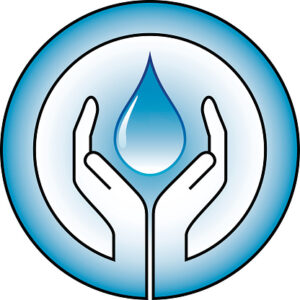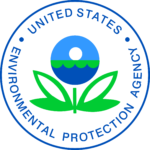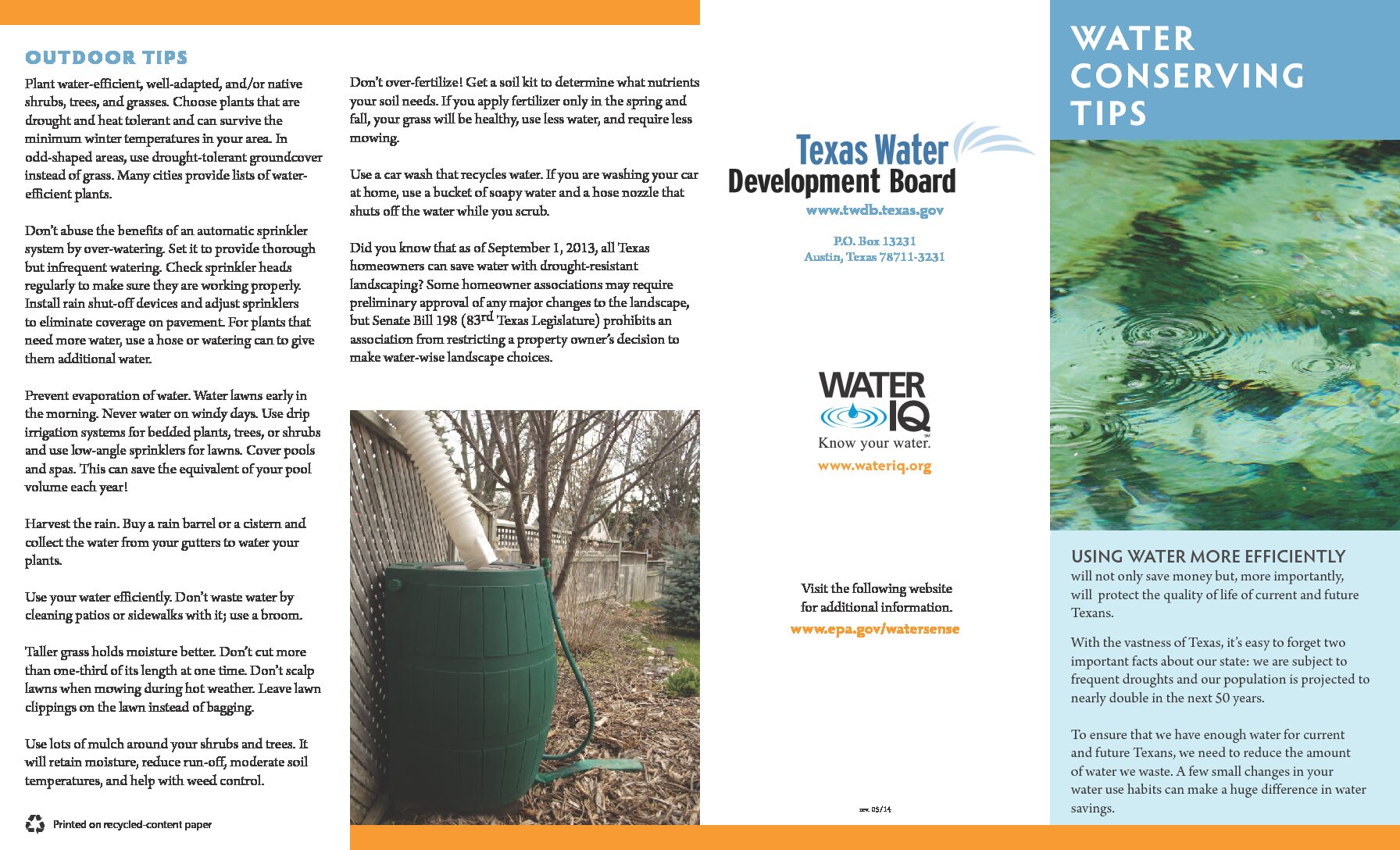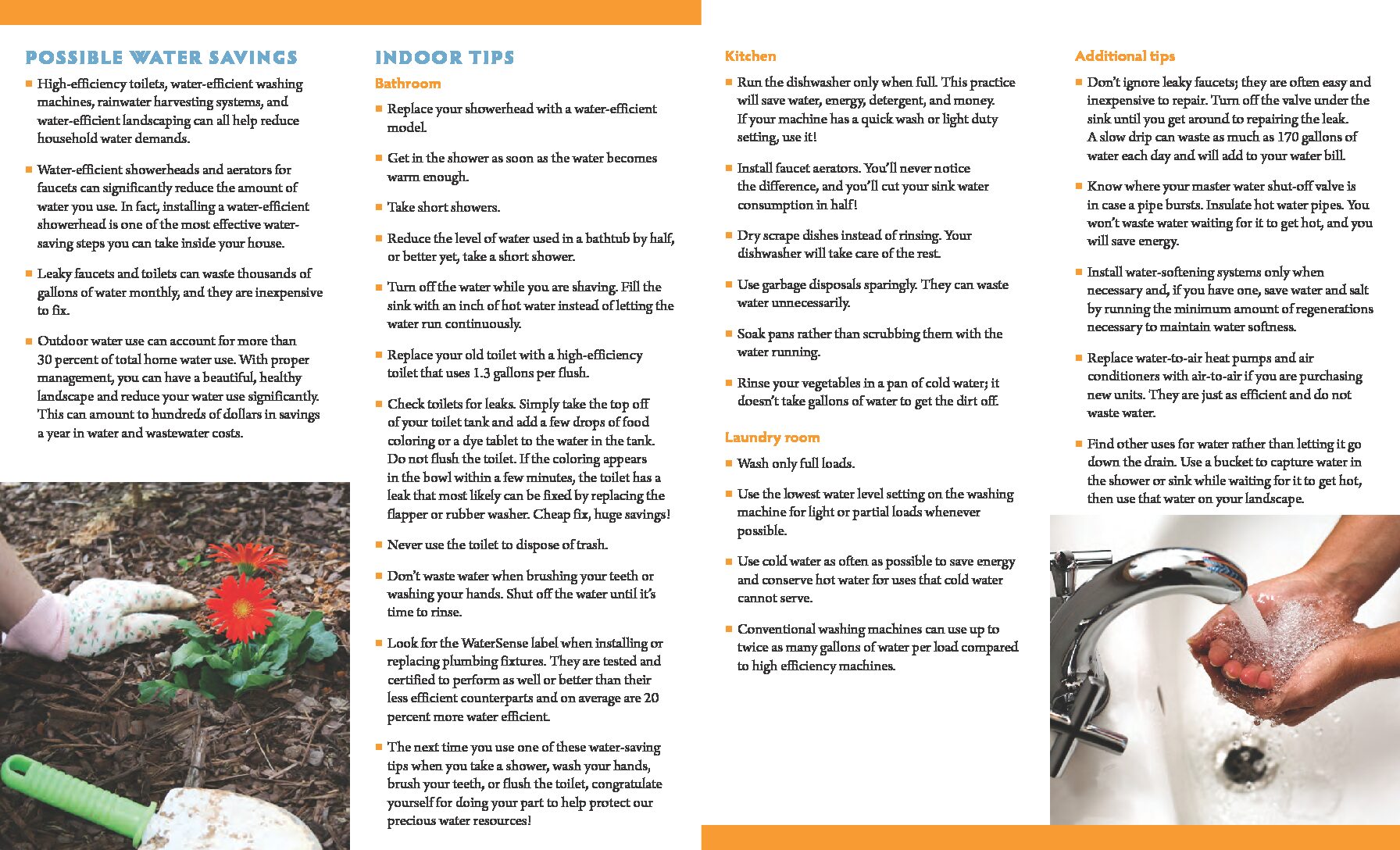North Harris County Regional Water Authority (NHCRWA) votes to reduce water rates
At its January 9, 2023, Regular Board Meeting, the Board of Directors of the North Harris County Regional Water Authority (NHCRWA) voted to reduce water rates. The Board reduced surface water rates from $5.05 to $4.55 per 1,000 gallons and groundwater pumpage fees from $4.60 to $4.10 per 1,000 gallons. These rate cuts, the first cuts in the history of NHCRWA, will go into effect February 1, 2023.
STAGE 1 VOLUNTARY WATER RESTRICTIONS IN EFFECT as of June 29, 2022
Dear Customer,
The City of Houston and the North Harris County Regional Water Authority ‘NHCRWA’ have both implemented Stage 1 of their respective Drought Contingency Plans. As a participant of the NHCRWA, Harris County Municipal Utility District No. 360 (the “District”) is implementing Stage 1 of its Drought Contingency Plan (DCP) immediately. Customers in the District are asked to respond to Voluntary Water Restrictions for all landscaped and other areas:
VOLUNTARY IRRIGATION IS LIMITED TO THE FOLLOWING TIMES AND DAYS ONLY
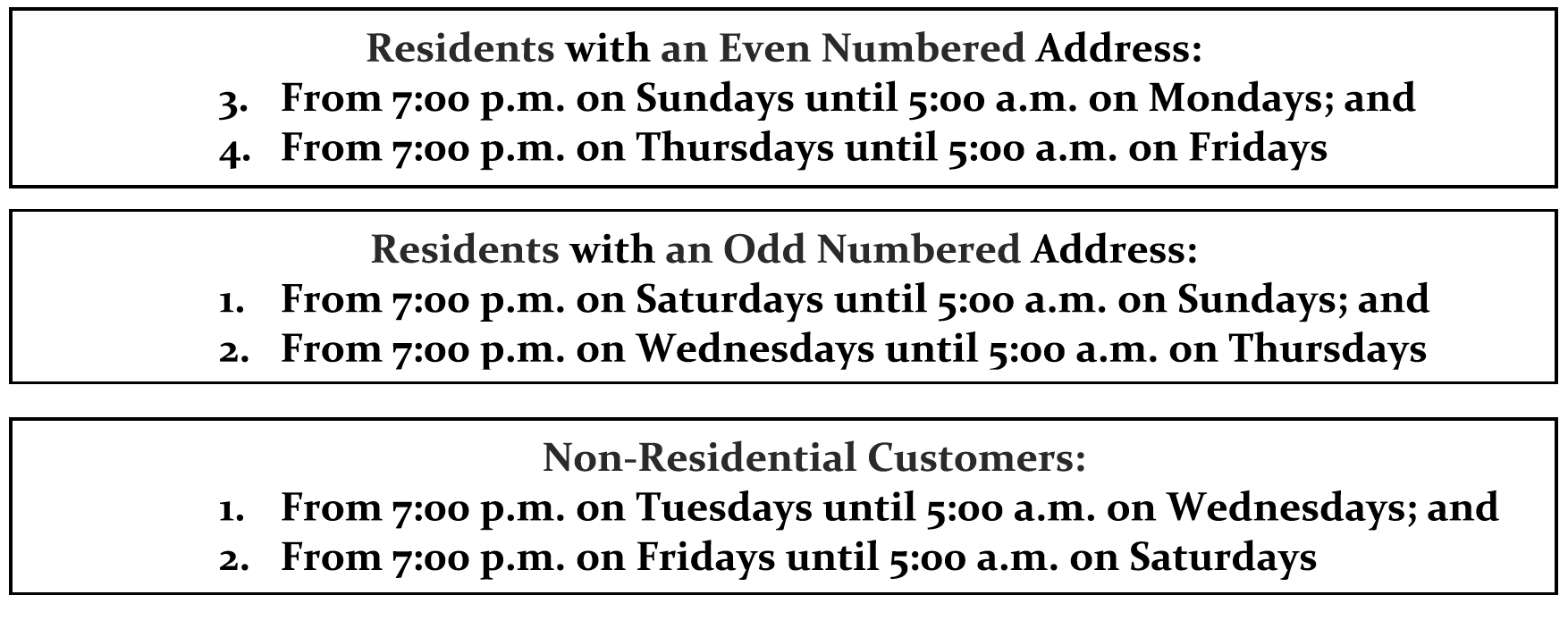
Water Facts:
- Peak hourly use usually occurs between 2 a.m. and 9 a.m., with a secondary peak between 6 p.m. and 9 p.m. Please reduce water usage during this time.
- We can all reduce our peak water use, and utility bills, by watering only as needed; washing full loads of laundry; and using more efficient plumbing fixtures.
- Residential water use reaches its peak from late July through August due to increased outdoor water use, but peaks can occur throughout the summer. During peak water use season, home-owners typically use two to four times more than in winter.
- The average American home uses about 260 gallons of water per day; during peak season, homes can use about 1,000 gallons of water in a day. Some homes use as much as 3,000 gallons on a peak day, or the equivalent of leaving garden hose running for nearly 8 hours!
- When temperatures rise and rain is scarce, peak water use in single-family homes typically occurs due to lawn and garden watering or when topping off a swimming pool.
- Experts estimate that 50 percent of the water we use outdoors goes to waste from evaporation or runoff due to overwatering.
- With the exception of extreme heat waves, peak use typically occurs on weekends as many people use their free time to tend to lawns and landscapes, do laundry, and wash cars.
Simple Tips for Saving Water Outdoors:
- Step on it: Grass doesn’t always need water just because it’s hot out. Step on the lawn, and if the grass springs back, then it doesn’t need water. An inexpensive soil moisture sensor can also show the amount of moisture at the plant’s roots and discourage overwatering.
- Tune up your system: Inspect irrigation systems and check for leaks and broken or clogged sprinkler heads. Fix sprinkler heads that are broken or spraying on the street or driveway.
- Play zone defense: Assign areas of your landscape different zones depending on sun/shade exposure, soil and plant types, and type of sprinklers, then adjust your irrigation system or watering schedule based on those zones.
- Give your hose a break: Sweep driveways, sidewalks, and steps rather than hosing them off. And don’t forget to check for leaks at your spigot connection and tighten as necessary.
- Leave it long: Raise your lawn mower blade. Longer grass promotes deeper root growth, resulting in a more drought resistant lawn, reduced evaporation, and fewer weeds.
For more information on peak water use, visit www.epa.gov/watersense/outdoor.
We appreciate your water conservation efforts and look forward to providing additional information in the near future.
Board of Directors
Harris County Municipal Utility District No. 360
Water and Sewer Services: Contact the District’s water and wastewater operations company,
Municipal District Services
24 hour service: 281-290-6503
Billing & Customer Care: 281-290-6507
Water Conservation 2022
We know living in Texas, water conservation can be inherently more difficult during the summer months and that’s why the EPA and the Texas Water Development Board has published water savings tips that will not only show you how to help conserve water, but also help you conserve cost.
The EPA has recommended the following:
Outdoors
- Maximize the use of natural vegetation and establish smaller lawns. For portions of your lot where a lawn and landscaping are desired, ask your local nursery for tips about plants and grasses with low water demand (such as creeping fescue). Consider planting more trees, shrubs, ground covers, and less grass. Shrubs and ground covers provide greenery for much of the year and usually demand less water. Use native plants in flower beds. Native plants have adapted to rainfall conditions in Texas and often provide good wildlife habitat. Cluster plants that require extra care together to minimize time and save water.
- When mowing your lawn, set the mower blades to 2-3 inches high. Longer grass shades the soil improving moisture retention, has more leaf surface to take in sunlight, allowing it to grow thicker and develop a deeper root system. This helps grass survive drought, tolerate insect damage and fend off disease.
- Only water the lawn when necessary. If you water your lawn and garden, only do it once a week, if rainfall isn’t sufficient. Avoid watering on windy and hot days. Water the lawn and garden in the morning or late in the evening to maximize the amount of water which reaches the plant roots (otherwise most of the water will evaporate). Use soaker hoses to water gardens and flower beds. If sprinklers are used, take care to be sure they don’t water walkways and buildings. When you water, put down no more than 1 inch (set out an empty cans to determine how long it takes to water 1 inch) each week. This watering pattern will encourage more healthy, deep grass roots. Over-watering is wasteful, encourages fungal growth and disease, and results in the growth of shallow, compacted root systems that are more susceptible to drought and foot traffic. If an automatic lawn irrigation system is used, be sure it has been properly installed, is programmed to deliver the appropriate amount and rate of water, and has rain shut-off capability.
- Apply mulch around shrubs and flower beds to reduce evaporation, promote plant growth and control weeds.
- Add compost or an organic matter to soil as necessary, to improve soil conditions and water retention.
- Collect rainfall for irrigation in a screened container (to prevent mosquito larvae growth).
- When washing a car, wet it quickly, then use a bucket of water to wash the car. Turn on the hose to final rinse (or let mother nature wash your car when it rains).
- Always use a broom to clean walkways, driveways, decks and porches, rather than hosing off these areas.
The EPA has recommended the following:
For Every Room in the House With Plumbing
- Repair leaky faucets, indoors and out.
- Consider replacing old equipment (like toilets, dishwahers and laundry machines).
In the Kitchen
- When cooking, peel and clean vegetables in a large bowl of water instead of under running water.
- Fill your sink or basin when washing and rinsing dishes.
- Only run the dishwasher when it’s full.
- When buying a dishwasher, select one with a “light-wash” option.
- Only use the garbage disposal when necessary (composting is a great alternative).
- Install faucet aerators.
In the Bathroom
- Take short showers instead of baths.
- Turn off the water to brush teeth, shave and soap up in the shower. Fill the sink to shave.
- Repair leaky toilets. Add 12 drops of food coloring into the tank, and if color appears in the bowl one hour later, your toilet is leaking.
- Install a toilet dam, faucet aerators and low-flow showerheads.
Laundry
- Run full loads of laundry.
- When purchasing a new washing machine, buy a water saving model that can be adjusted to the load size.
For more information, click below
The Texas Water Development Board offers water saving ideas and cost savings tips!
Emergency Waterline Repair Completed
As of 4:30 p.m. the emergency repair has been completed. Water service has been restored.
Emergency Water Line Repair
We are aware of the water main break on Huffmeister. Crews are in the process of repairing the water line. During the repair some customers may experience loss of water service. Work is expected to be completed by 5:00 today. Check back for updates.
Hurricane Preparedness 2022
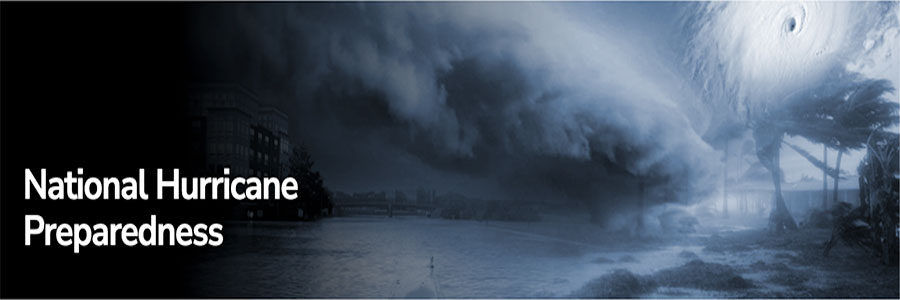
Be ready for hurricane season. Today you can determine your personal hurricane risk, find out if you live in a hurricane evacuation zone, and review/update insurance policies. You can also make a list of items to replenish hurricane emergency supplies and start thinking about how you will prepare your home for the coming hurricane season. If you live in hurricane-prone areas, you are encouraged to complete these simple preparations before hurricane season begins on June 1.
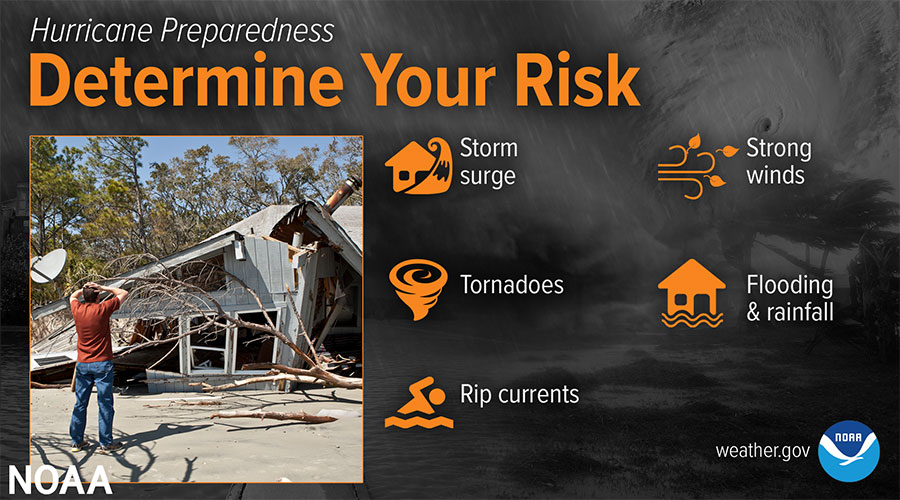
Find out today what types of wind and water hazards could happen where you live, and then start preparing how to handle them. Hurricanes are not just a coastal problem. impacts from wind and water can be felt hundreds of miles inland, and significant impacts can occur regardless of the storm’s strength. Know if you live in an area prone to flooding and if you’re safe to remain in your home.
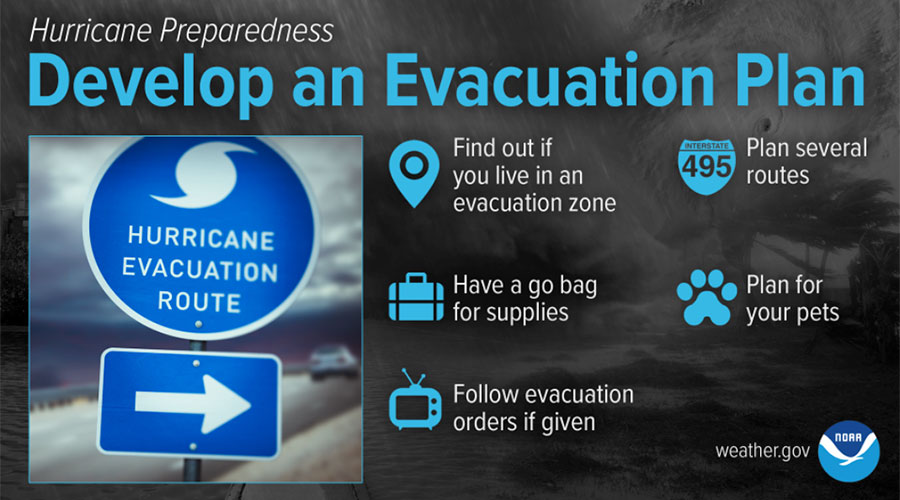
Find out if you live in a hurricane evacuation zone. You may also need to leave if you live in a flood prone area or in a mobile home outside a hurricane evacuation zone. Now is the time to begin planning where you would go and how you would get there.
You do not need to travel hundreds of miles. Your destination could be a friend or relative who lives in a well built home outside flood prone areas. Remember, your safest place may be to remain home. Be sure to account for your pets in your plan.
As hurricane season approaches, listen to local officials on questions related to how you may need to adjust any evacuation plans based on the latest health and safety guidelines from the CDC and your local officials.
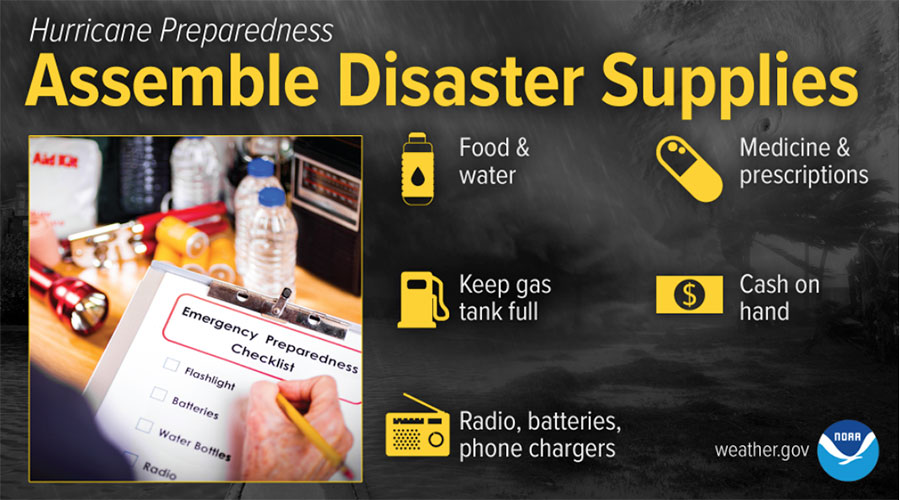
Whether you’re evacuating or sheltering-in-place, you’re going to need supplies not just to get through the storm but for the potentially lengthy and unpleasant aftermath. Have enough non-perishable food, water and medicine to last each person in your family a minimum of 3 days (store a longer than 3-day supply of water, if possible). Electricity and water could be out for at least that long. You’ll need extra cash, a battery-powered radio and flashlights. You may need a portable crank or solar-powered USB charger for your cell phones.
If you need to go to a public shelter, follow health guidelines from your local officials and the CDC.
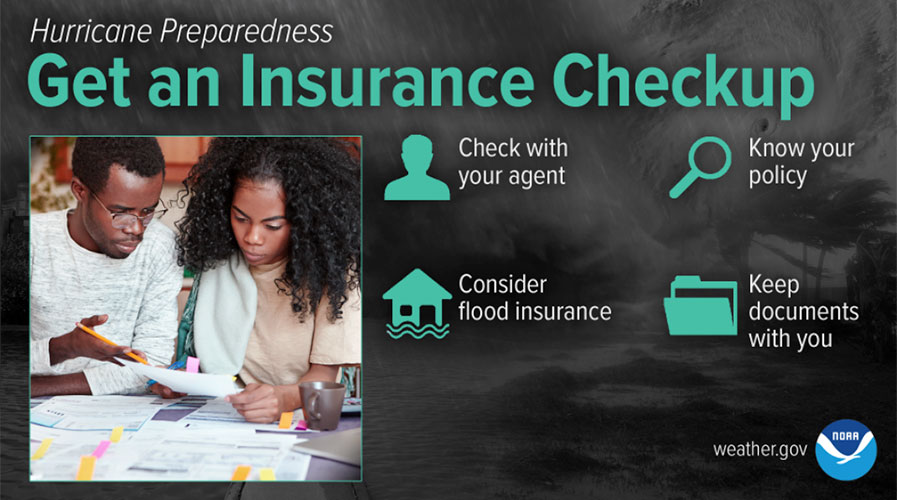
Call your insurance company or agent and ask for an insurance check-up to make sure you have enough insurance to repair or even replace your home and/or belongings. Remember, home and renters insurance doesn’t cover flooding, so you’ll need a separate policy for it.
Flood insurance is available through your company, agent, or the National Flood Insurance Program at floodsmart.gov. Act now, as flood insurance requires a 30-day waiting period.
- FLASH Insurance Guide: If Disaster Strikes, Will You Be Covered?
- Find available coverage at floodsmart.gov
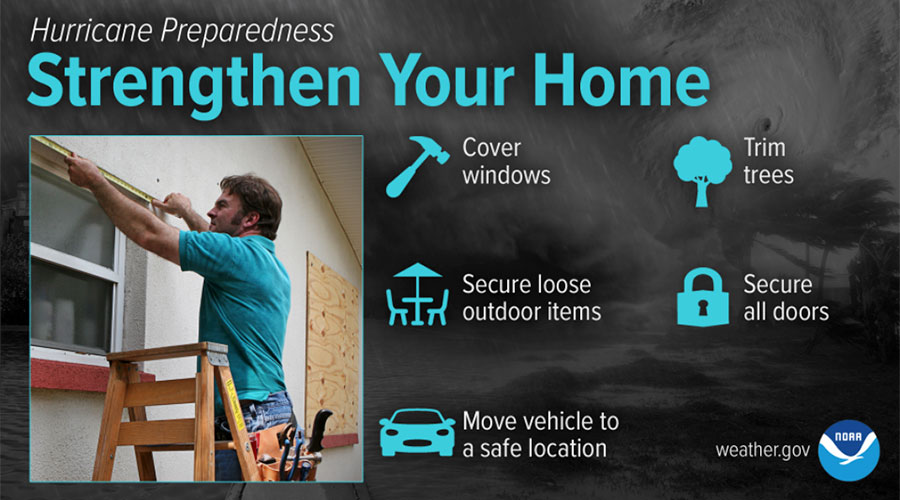
Whether you’re evacuating, or planning to ride out the storm in your home, make sure it is in good repair and up to local hurricane building code specifications to withstand wind impacts. Many retrofits are not as costly or time consuming as you may think.
Have the proper plywood, steel or aluminum panels to board up the windows and doors. Remember, the garage door is the most vulnerable part of the home, so it must be able to withstand the winds.
If you’re a renter, work with your landlord now to prepare your home for a storm.
- FLASH: How-To Videos
- Protect Your Home From Flooding Video (English/Spanish)
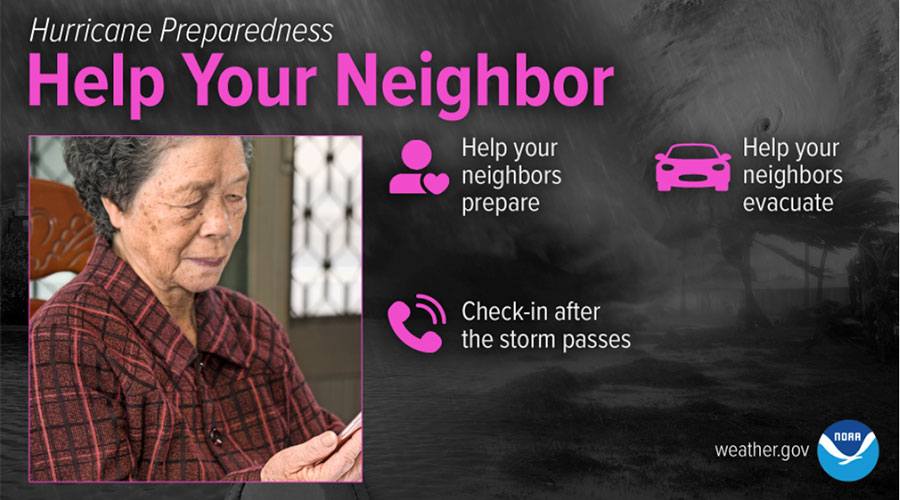
Many people rely on their neighbors before and after a disaster, and there are many ways you can help them. Learn about all the different actions you and your neighbors can take to prepare and recover from the hazards associated with hurricanes.
Start the conversation now with these Neighbor Helping Neighbor strategies but remember you may need to adjust your preparedness plans based on the latest health and safety guidelines from the CDC and your local officials.
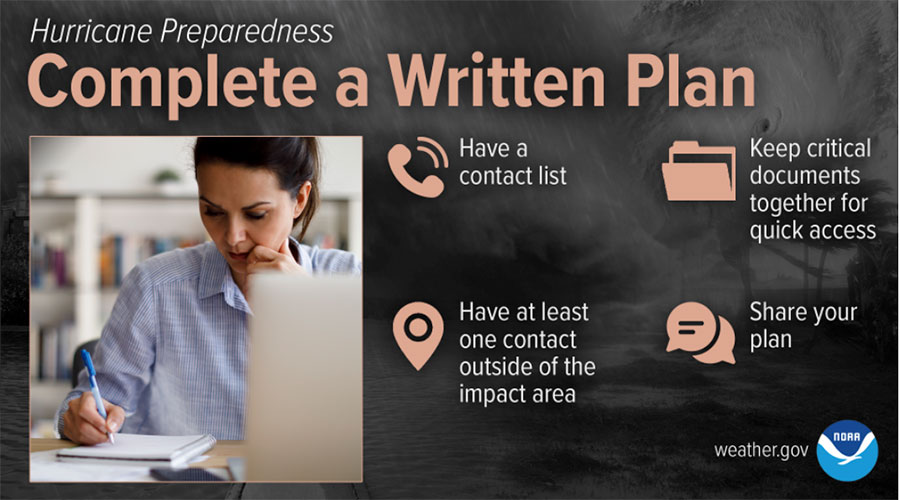
The time to prepare for a hurricane is before the season begins, when you have the time and are not under pressure. If you wait until a hurricane is on your doorstep, the odds are that you will be under duress and will make the wrong decisions.
Take the time now to write down your hurricane plan. Know who issues evacuation orders for your area, determine locations on where you will ride out the storm, and start to get your supplies now. Being prepared before a hurricane threatens makes you resilient to the hurricane impacts of wind and water. It will mean the difference between being a hurricane victim or a hurricane survivor.
Hurricane Preparedness- 2021
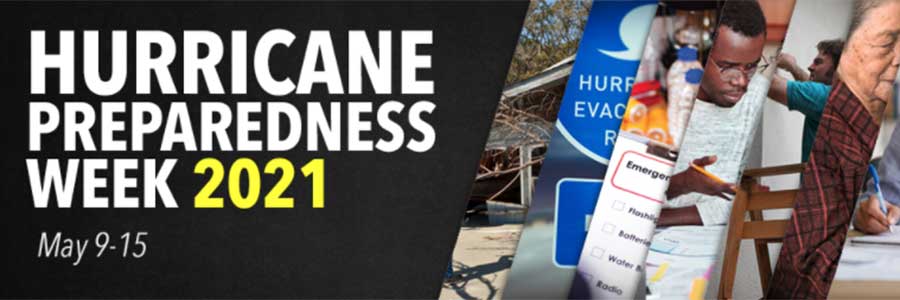
Be ready for hurricane season. Today you can determine your personal hurricane risk, find out if you live in a hurricane evacuation zone, and review/update insurance policies. You can also make a list of items to replenish hurricane emergency supplies and start thinking about how you will prepare your home for the coming hurricane season. If you live in hurricane-prone areas, you are encouraged to complete these simple preparations before hurricane season begins on June 1. Keep in mind, you may need to adjust any preparedness actions based on the latest health and safety guidelines from the CDC and your local officials.
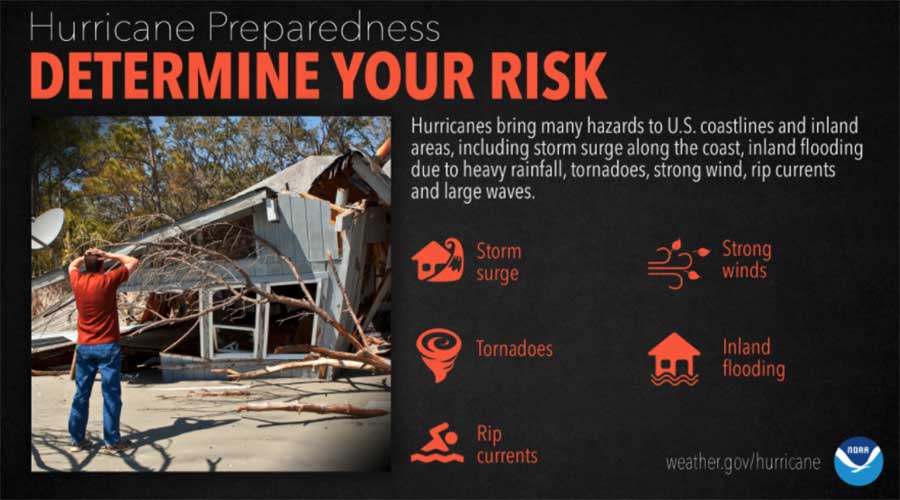
Find out today what types of wind and water hazards could happen where you live, and then start preparing how to handle them. Hurricanes are not just a coastal problem. Their impacts can be felt hundreds of miles inland, and significant impacts can occur without it being a major hurricane.
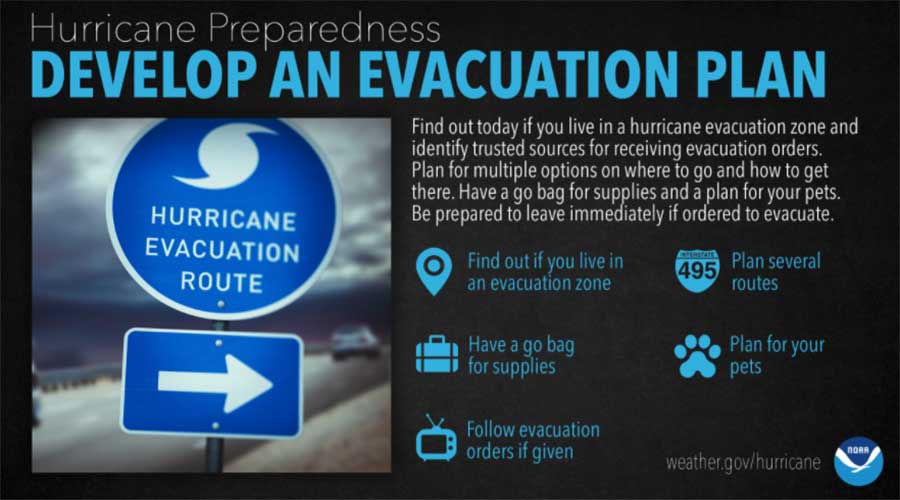
The first thing you need to do is find out if you live in a hurricane evacuation zone. If you do, now is the time to begin planning where you would go and how you would get there. You do not need to travel hundreds of miles, but have multiple options. Your destination could be a friend or relative who doesn’t live in an evacuation zone. If you live in a well-built home outside the evacuation zone, your safest place may be to remain home. Be sure to account for your pets in your plan. As hurricane season approaches, listen to local officials on questions related to how you may need to adjust any evacuation plans based on the latest health and safety guidelines from the CDC and your local officials.
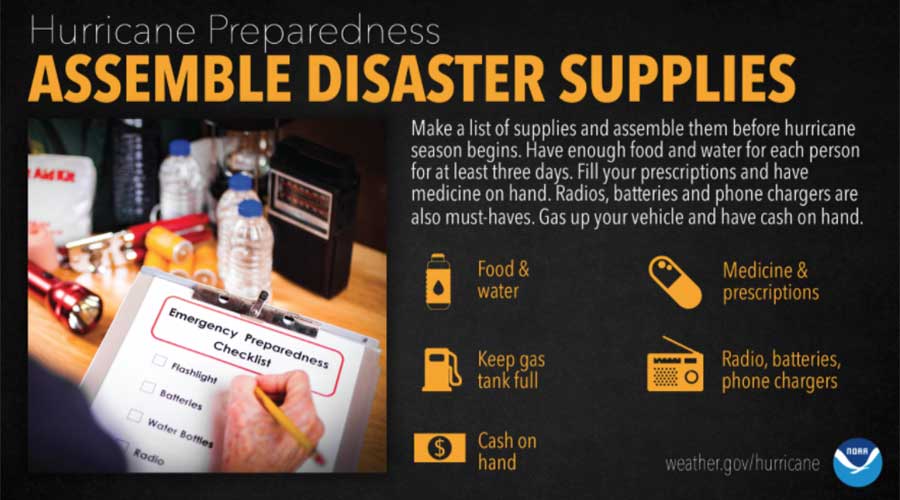
You’re going to need supplies not just to get through the storm but for the potentially lengthy and unpleasant aftermath. Have enough non-perishable food, water and medicine to last each person in your family a minimum of three days. Electricity and water could be out for at least that long. You’ll need extra cash, a battery-powered radio and flashlights. You may need a portable crank or solar-powered USB charger for your cell phones.
If you need to go to a public shelter, the CDC recommends bringing items that can help protect you and others from COVID-19, such as hand sanitizer with at least 60% alcohol, bar or liquid soap, disinfectant wipes (if available) and two masks for each person. (Children under two years old and people having trouble breathing should not wear face coverings.)
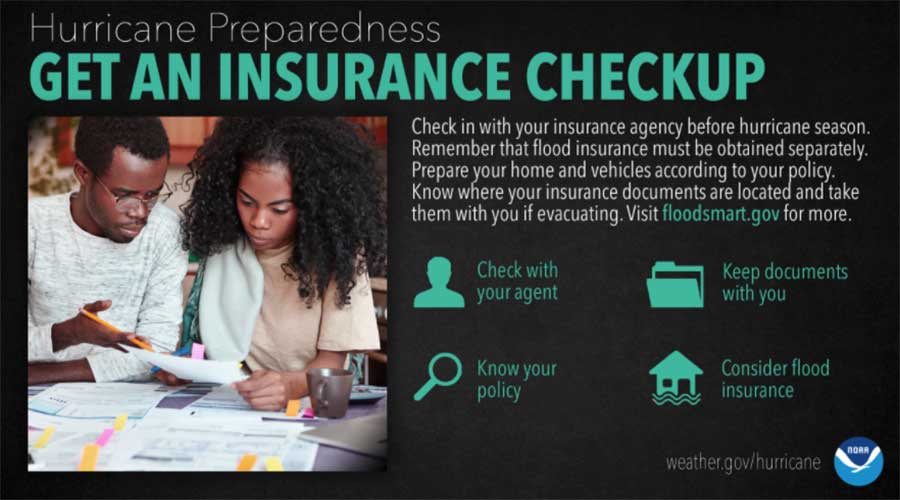
Call your insurance company or agent and ask for an insurance check-up to make sure you have enough homeowners insurance to repair or even replace your home. Don’t forget coverage for your car or boat. Remember, standard homeowners insurance doesn’t cover flooding. Whether you’re a homeowner or renter, you’ll need a separate policy for it, and it’s available through your company, agent or the National Flood Insurance Program at floodsmart.gov. Act now as flood insurance requires a 30-day waiting period.
- FLASH Insurance Guide: If Disaster Strikes, Will You Be Covered?
- Find available coverage at floodsmart.gov
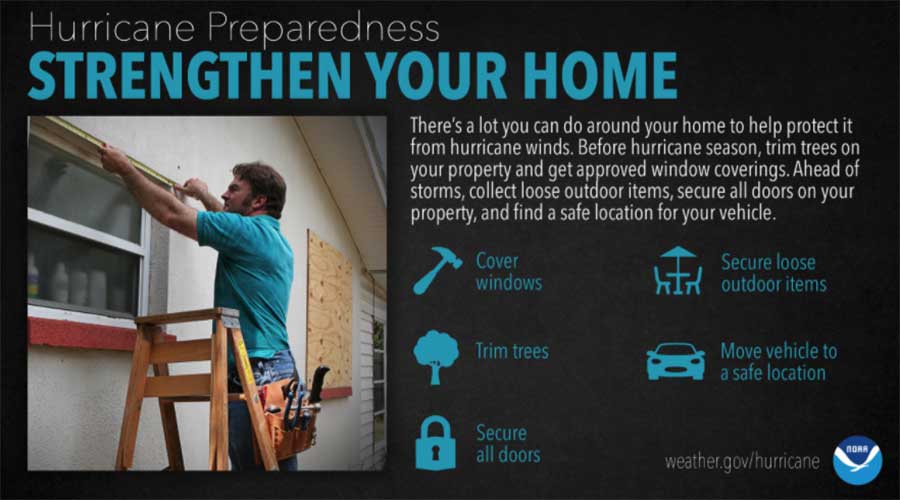
If you plan to ride out the storm in your home, make sure it is in good repair and up to local hurricane building code specifications. Many retrofits are not as costly or time consuming as you may think. Have the proper plywood, steel or aluminum panels to board up the windows and doors. Remember, the garage door is the most vulnerable part of the home, so it must be able to withstand the winds.
- FLASH: How-To Videos
- Protect Your Home From Flooding Video (English/Spanish)
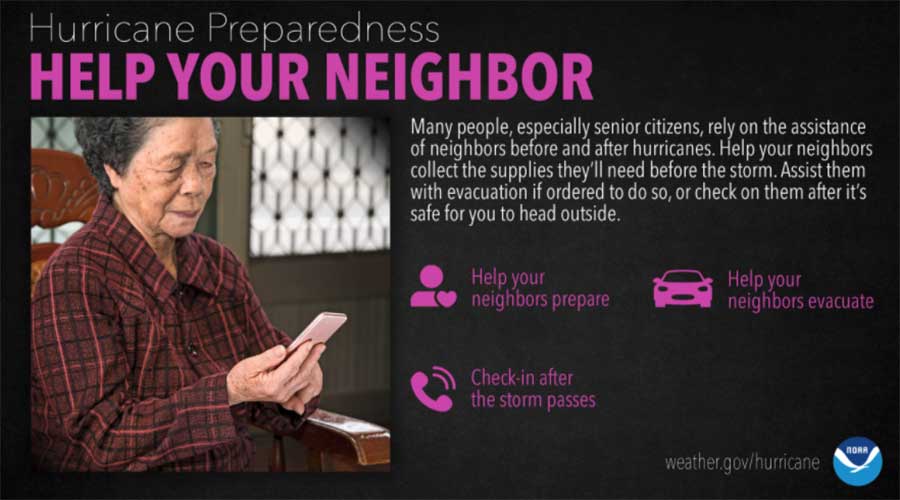
Many Americans rely on their neighbors after a disaster, but there are also many ways you can help your neighbors before a hurricane approaches. Learn about all the different actions you and your neighbors can take to prepare and recover from the hazards associated with hurricanes. Start the conversation now with these Neighbor Helping Neighbor strategies but remember you may need to adjust your preparedness plans based on the latest health and safety guidelines from the CDC and your local officials.
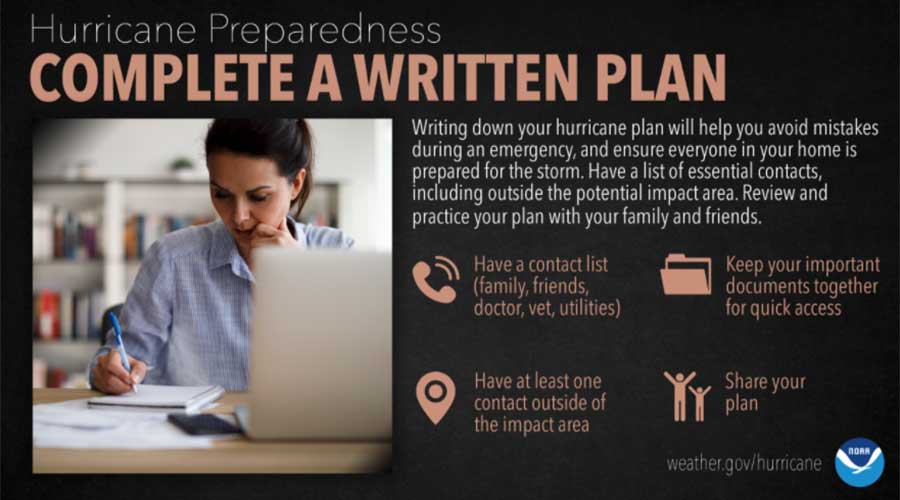
The time to prepare for a hurricane is before the season begins, when you have the time and are not under pressure. If you wait until a hurricane is on your doorstep, the odds are that you will be under duress and will make the wrong decisions. Take the time now to write down your hurricane plan. Know who issues evacuation orders for your area, determine locations on where you will ride out the storm, and start to get your supplies now. Being prepared before a hurricane threatens makes you resilient to the hurricane impacts of wind and water. It will mean the difference between being a hurricane victim or a hurricane survivor.
North Harris County Regional Water Authority (NHCRWA) Rate Increase
The NHCRWA fee on your water bill is imposed by the North Harris County Regional Water Authority. NHCRWA increased their well pumpage fee effective April 1, 2021, from $4.25 per thousand gallons to $4.60 per thousand gallons. Harris County MUD 360 does not control this fee, which is a direct pass through cost, with increases expected annually.
For additional information, please visit www.NHCRWA.org.
See MDS for Notices
Please visit MDS’s website to find out if HCMUD 360 is under a boil water notice.

